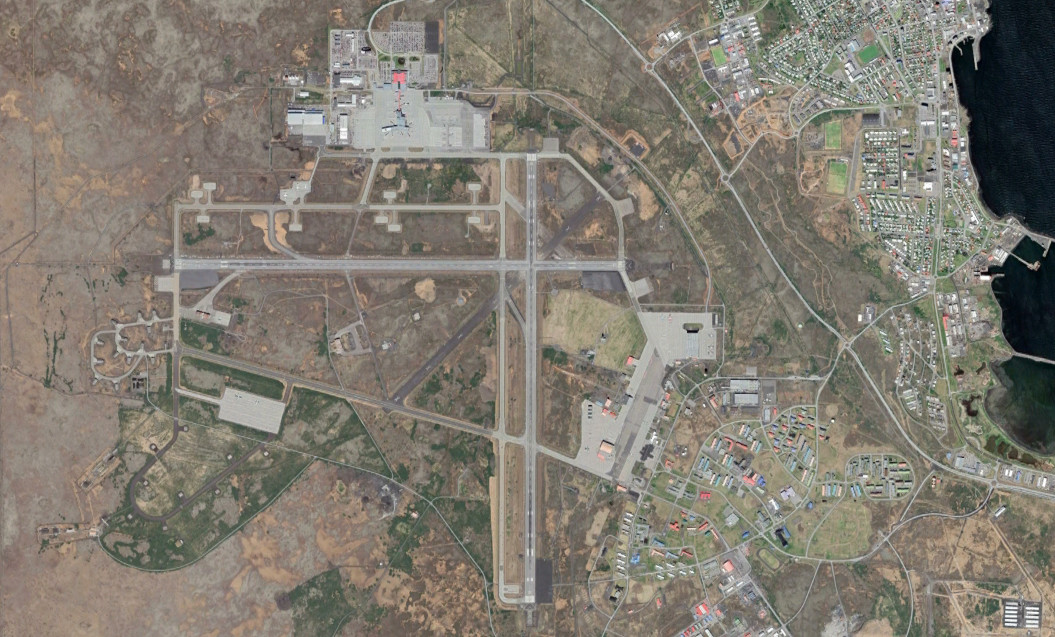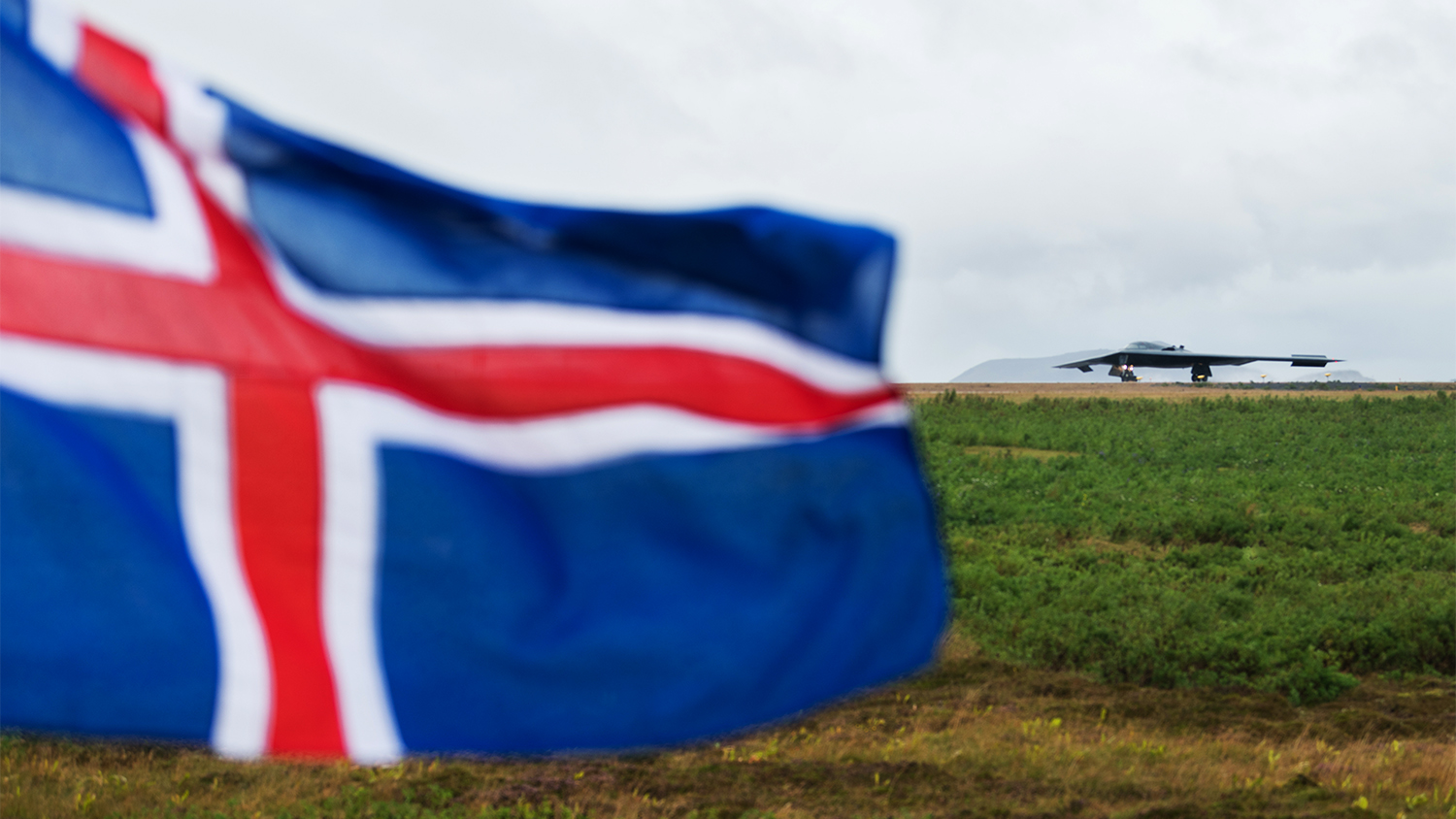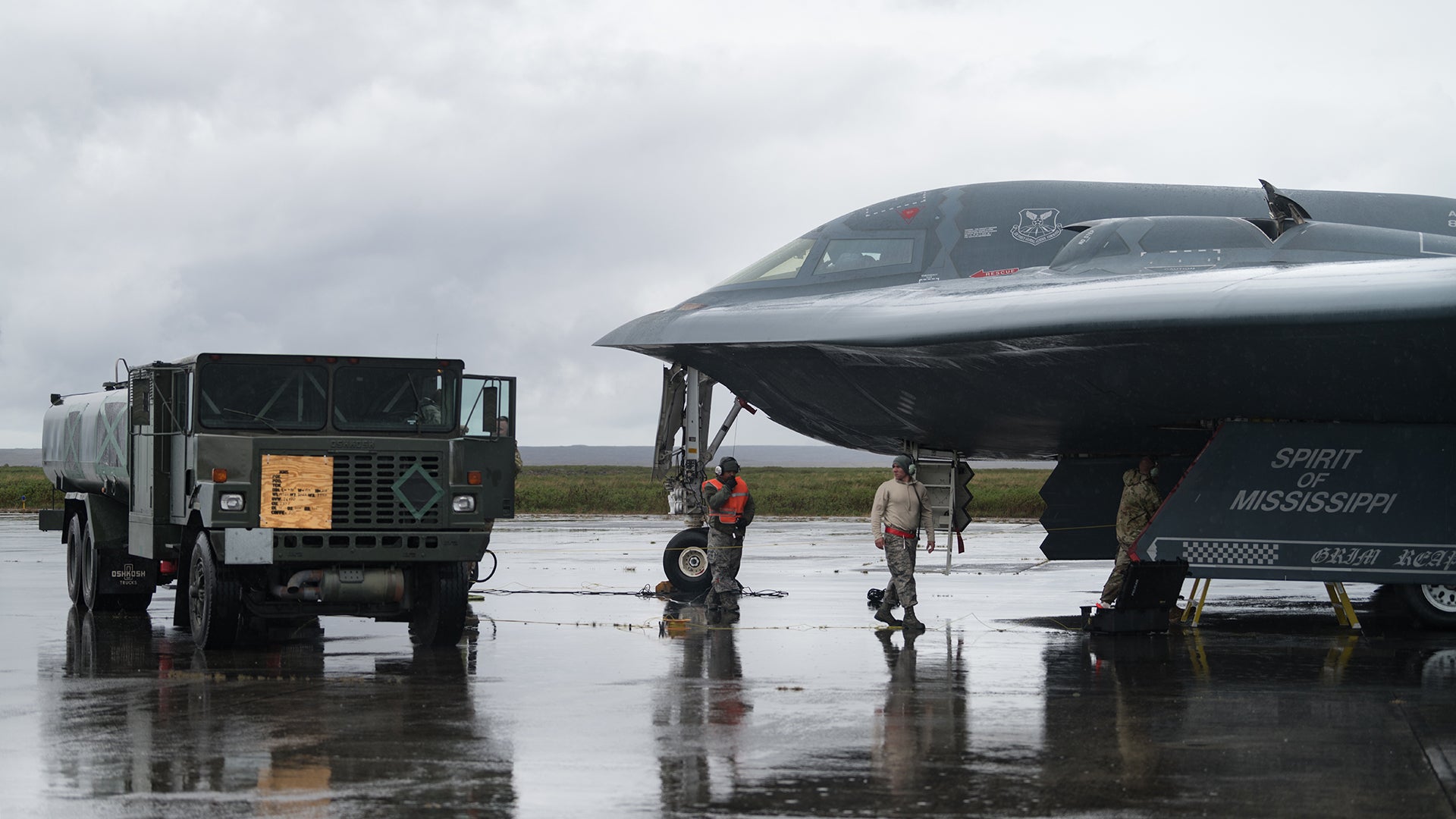A U.S. Air Force B-2 Spirit stealth bomber has made the type’s first-ever visit to Iceland. The mission is nearly a year after a B-2 made another first of its kind trip to Wake Island in the Pacific region. It also comes as the Air Force has become increasingly concerned about whether it would have access to established bases during a large-scale conflict and is actively exploring new and improved rapid, expeditionary, and distributed deployment concepts.
The B-2, using the call sign Mighty 22, arrived at Naval Air Station Keflavik from RAF Fairford in the United Kingdom on Aug. 28, 2019, and returned to Fairford. Three of the stealth bombers from the 509th Bomb Wing at Whiteman Air Force Base in Missouri had touched down in the United Kingdom the day before to kick off a series of regional training exercises, according to an official statement from U.S. European Command (EUCOM).
The flight of B-2s had originally left Whiteman on Aug. 26, using the call signs Death 11, 12, and 13. Death 11 and 12 flew in formation, along with a tanker, toward Fairford, while Death 13 arrived later on by itself. For unclear reasons, Death 11 also broke away at one point from Death 12 and the tanker.
“The deployment of strategic bombers to the U.K. helps exercise RAF Fairford as United States Air Forces in Europe’s forward operating location for bombers,” the EUCOM statement said. “The deployment also includes joint and allied training in Europe to improve bomber interoperability. Training with partners, allied nations and other U.S. Air Force units contributes to our readiness and enables us to build enduring and strategic relationships necessary to confront a broad range of global challenges.”
There was no specific mention of the Iceland visit or the B-2s traveling to any other sites in particular. The other two bombers at Fairford flew local missions from that base on Aug. 28, 2019, while the third went to Keflavik.

Historically, B-2s have been limited to operating from Fairford and Whiteman, as well as Andersen Air Force Base on Guam and Diego Garcia in the Indian Ocean, due to the specialized requirements to support the aircraft. All of these bases have hangars capable of shielding the bombers’ sensitive radar-absorbing skins from the elements.
Other bases do have suitable facilities that they can be made available to the B-2s, if necessary. When one of the bombers traveled to Wake Island in September 2018, it had started out at Hickam Air Force Base in Hawaii, which is situated adjacent to Daniel K. Inouye International Airport on the island of Oahu. This, in of itself, was something of an unusual deployment.
Mighty 22 spent less than five hours at Keflavik and its not clear if the crew even got out of the plane. During the B-2’s visit to Wake Island, crews conducted a “hot pit” refuel, a practice where the plane never shuts down its engines. The Air Force often uses this tactic to speed up the pace of operations at forward locations, either for training or actual combat missions. When it comes to more complex and finicky aircraft, such as the B-2, it can also remove the need for complicated start-up procedures and help ensure it will be able to get airborne again without issue.
In this case, at Keflavik, doing something similar would have also demonstrated the ability to use the base as an emergency divert or staging location if more typical launch sites, such as Fairford, were unavailable for any reason. Flying from Iceland would still allow B-2s to conduct operations over Europe, as well as into the increasingly strategic and potentially contested Arctic region.
Though U.S. military presence at Keflavik waned after the end of the Cold War, with the U.S. Navy formally shuttering Naval Air Station Keflavik, which had also served as a forward deployment location for U.S. Air Force contingents, in 2006. Iceland subsequently took responsibility for the remaining base facilities, which are still commonly referred to as Naval Air Station Keflavik. This site, collocated with the civilian Keflavík International Airport, still supports rotational detachments of fighters from the United States and other NATO members as part of the Alliance’s Icelandic Air Policing mission. Other exercises also regularly make use of the base.

Since 2015, however, the United States has been working to re-establish a larger presence at Keflavik, particularly in light of increasing, potentially hostile Russian military activity. The Navy has been particularly keen to highlight concerns about increasing Russian submarine operations in the Arctic and North Atlantic and, to a lesser extent, the emergence of Chinese naval activity in those areas. The service reactivated its 2nd Fleet to better manage its own operations in the North Atlantic in August 2018.
This has all led the United States to invest more than $80 million in recent years to expand runways, refurbish hangars and other facilities, and otherwise rehabilitate the base, particularly to support increasing U.S. Navy P-8A Poseidon maritime patrol aircraft deployments. Those same expansions may also help accommodate larger aircraft, including the B-2s, at least during short-duration pit stops.

The Air Force has already been stepping up bomber deployments to the region, in general, primarily act as deterrents to any potential Russian aggression and offer clear commitments to America’s NATO allies. In March 2019, a relatively large task force of six B-52 Stratofortresses arrived at Fairford for one such rotation, with at least five of the bombers taking part in one especially impressive sortie over the Norwegian Sea.
Three months later, additional B-52s arrived in the region to take part in a number of exercises. During that deployment, one of the bombers made an apparent mock attack run toward the Crimean Peninsula, which Russia illegally seized from Ukraine in 2014. Those two countries have been embroiled in a limited conflict ever since.
It’s also worth noting that it was a day of other firsts back in the United Kingdom, as seven Israeli Air Force F-15 Baz combat jets, along with a KC-707 tanker and C-130J airlifter, arrived at RAF Waddington ahead of Exercise Cobra Warrior. The U.K. Royal Air Force, along with the German, Italian, and U.S. Air Forces, are also participating. This is the first time IAF combat jets have visited the United Kingdom.
All told, the skies over and around the United Kingdom look set to be particularly jam-packed with military aircraft for the immediate future. It will especially interesting to see where else the three B-2s visit during their deployment.
UPDATE: 3:15am PDT—
The USAF has issued an official press release on the B-2’s visit to Iceland. Here are the three bits of information to add to the post above:
- The USAF states two B-2 bombers were involved in the mission to Iceland. We were only aware of one. We will try to clarify which number is accurate. It is also possible that only one aircraft landed.
- The aircraft did use the hot-pit refueling method and never shut down their engines.
- A fairly candid quote about the reason for the B-2’s use of the base was also included in one of the photo captions. It also underlines that the base is now considered a forward operating location for the stealth bomber. It reads:
The use of strategic bombers in Iceland helps exercise Naval Air Station Keflavik as a forward location for the B-2, ensuring that it is engaged, postured and ready with credible force to assure, deter and defend the U.S. and its allies in an increasingly complex security environment.
Here’s a gorgeous shot from the B-2’s arrival to Keflavik:

Contact the author: joe@thedrive.com
